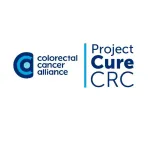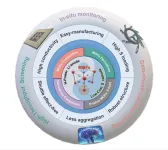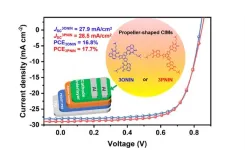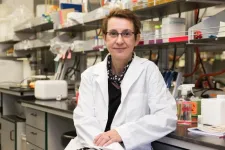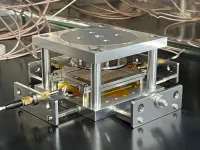(Press-News.org) In an effort to expedite its life-saving work, the Colorectal Cancer Alliance (Alliance) Project Cure CRC initiative is excited to open its Request for Proposals (RFP). Tens of millions of dollars will be available to researchers from around the world whose work aims to expedite colorectal cancer (CRC) research to a curable science. Beginning March 1, the program is accepting applications for one to three-year projects from qualifying professionals at research-based institutions and private companies. Priority will be given to proposals that focus on high-risk/high-reward projects to accelerate new CRC therapies and technologies from bench to bedside.
The Alliance, the nation’s nonprofit leader dedicated to colorectal cancer, launched Project Cure CRC in late 2023 as part of its mission to end colorectal cancer in our lifetime. Colorectal cancer is the second-leading cause of cancer deaths overall, yet it is less known and less funded than other less deadly cancers.
“The unprecedented RFP ignites an exciting new chapter for the Alliance, which celebrates 25 years of impact in March,” said Michael Sapienza, CEO of the Colorectal Cancer Alliance. “The Alliance has made its imprint on CRC advancements in research, awareness, screening, and more, but an investment this size is groundbreaking in the history of colorectal cancer and will be transformational in our mission to end the disease.”
Proposals will be accepted for Early-Career Investigator Awards, Senior Investigator Awards, Pilot Awards, Team Science Awards, Opportunistic Awards, and Strategic Awards from academic and industry researchers. Special emphasis will be given to proposals that fast-track existing preclinical and clinical research in areas that increase therapeutic options, improve adjuvant therapies, deliver novel therapies focused on driver mutations (such as BRAF, TP53, KRAS, BRCA1), and investigate strategies to manipulate the tumor microenvironment (TME) to advance the use of immunotherapy.
“To ignite cutting-edge research ideas and efforts, the Alliance recently hosted its first-ever Cure CRC Summit, convening the nation’s top colorectal cancer scientists,” says John Marshall, M.D., Board Member and Scientific Co-Chair, Project Cure CRC, Physician Executive Director, Medstar Washington D.C. Integrated Hematology Oncology Division, and Director, The Ruesch Center for the Cure of GI Cancer. “We harvested information from the summit to identify RFP research priorities that can bring us closer to major breakthroughs in colorectal cancer diagnosis, treatment, metastasis, and survivorship.”
Applications will be accepted on a rolling basis starting on March 1st. There is no deadline for applications and a response will be provided within one month of submission. Creative partnerships are encouraged and will be prioritized.
A webinar with additional details about Project Cure CRC and the RFP will take place on March 5 at 11 a.m. To register for the webinar or for more information on the RFP research objectives, awards available, and submission guidelines, visit Project Cure CRC.
About the Colorectal Cancer Alliance
The Colorectal Cancer Alliance empowers a nation of passionate and determined allies to prevent, treat, and overcome colorectal cancer in their lives and communities. We advocate for prevention, magnify support, and accelerate research to end this disease. Founded in 1999 and headquartered in Washington, D.C., the Alliance is the largest national nonprofit dedicated to colorectal cancer, and we exist to end this disease in our lifetime. For more information, visit colorectalcancer.org.
END
Colorectal Cancer Alliance announces Request for Proposals (RFP) as it launches the largest-ever CRC research investment totaling tens of millions
Project Cure CRC will prioritize proposals that seek to transform research into a curable science
2024-02-27
ELSE PRESS RELEASES FROM THIS DATE:
Reaching federal youth sport participation goal could save US billions of dollars
2024-02-27
First-of-its-kind study suggests increasing the percentage of youth in the United States who participate in sports to meet a Healthy People 2030 goal could improve children’s physical and mental health and save $80 billion.
Achieving the Healthy People 2030 youth sports participation goal could save the United States $80 billion in direct medical costs and productivity losses and deliver over 1.8 million more quality years of life to Americans, according to a study that will be published on Feb. 27 in the American Journal of Preventive Medicine.
Every decade since 1980, Healthy People has provided science-based, 10-year national objectives and ...
Improving lithium-sulfur batteries with metal organic framework-based materials
2024-02-27
Current lithium-ion battery technology does not have the energy density necessary to meet the demands for renewable energy. In theory, lithium-sulfur batteries could be a viable alternative with a higher specific capacity and energy density. However, sulfur has disadvantages that currently limit its practical adoption.
A comprehensive review published in Nano Research on February 8 outlines how metal organic frameworks-based cathode materials could improve the performance of lithium-sulfur batteries, making them a practical alternative to lithium-ion batteries.
“The ...
An alternate arrangement: how a propeller-shaped isomer can improve organic solar cells
2024-02-27
Imagine technology as a race car speeding down a track – it can only go as fast as its engine allows. But just when it seemed like organic solar cells hit a roadblock, along comes 3PNIN, a game-changing molecule shaped like a propeller, ready to turbocharge their progress and break through barriers.
Organic solar cells (OSCs) represent the pinnacle of renewable energy, yet certain components have fallen significantly behind the trajectory of ongoing development. Particularly, cathode interfacial materials (CIMs) have failed to sustain ...
Binghamton University biologist named Fellow of American Academy of Microbiology
2024-02-27
BINGHAMTON, N.Y. -- Binghamton University, State University of New York researcher Karin Sauer is among 65 scientists elected as Fellows of the American Academy of Microbiology this year.
Fellows are elected by their peers based on their scientific achievements and original contributions to the field of microbiology.
Sauer’s lab aims to find ways to control communities of bacteria called biofilms and to curb their extraordinary resistance to antimicrobial agents. The team’s findings could have an impact on a wide range of healthcare practices, from ear infections to wound care.
“I’m honored and ...
Community culture shapes ceramics
2024-02-27
Archeologists have long used the shapes and styles of pottery as a proxy for ancient cultures. But how does the cultural alignment of ceramic forms arise? To explore this question, Tetsushi Nonaka and colleagues asked 21 potters in three different communities—one in France in Bourgogne and two in India in Bulandshahar district, Uttar Pradesh—to throw pots with the same unfamiliar shapes. One of the Indian pottery workshops was Hindu, the other was Muslim. In each community, several different potters tried the shapes. Through careful measurement, the authors were able to determine ...
Nano-sized particles emitted from gas stoves
2024-02-27
A study quantifies the emission of extremely tiny particles by gas stoves and finds that the particles could harm human health. Airborne nanoparticles between 1–3 nm, referred to as nanocluster aerosol or NCA, are known to be bioactive and toxic, but measuring such minute particles has been a challenge. Brandon E. Boor and colleagues measured indoor NCA during propane gas cooking in the Purdue zero Energy Design Guidance for Engineers (zEDGE) test house using a novel instrument. Combining measurement data with the general dynamic equation for aerosols, the authors were able to characterize the production and behavior ...
Reproducing the Moon's surface environment on Earth
2024-02-27
Continuous research is being conducted globally on using the Moon as an advanced base for deep space exploration, and Korea is no exception in these efforts. The Korea Institute of Civil Engineering and Building Technology (KICT, President Kim, Byung-suk) successfully implemented an electrostatic environment that simulates the Moon's surface conditions, not in space but on Earth. The researchers also assessed its performance and effectiveness.
Among the most serious threats in executing lunar missions is the Moon's surface environment, which is electrostatically charged. Due to its extremely thin atmosphere, the Moon is directly exposed to solar ultraviolet rays, X-rays, ...
Social media and adolescent mental health
2024-02-27
In an editorial, Sandro Galea and Gillian Buckley summarize the findings of a National Academies of Sciences, Engineering, and Medicine consensus study report on social media and adolescent mental health. Social media has to some extent been treated as a monolith, but the report finds that different types of engagements with different digital platforms may have very different effects on mental health. In some situations, social media may benefit adolescent mental health, as when LGBTQ+ adolescents in isolating circumstances are able to form supportive ...
How decades of expertise with the fourth state of matter could bring satellites closer to Earth
2024-02-27
Thousands of satellites take pictures, gather information and relay internet traffic from high above the Earth. Now, the challenge is making satellites that operate closer to home, in what is called a very low earth orbit (VLEO), where there is ample space for additional satellites, and the pictures taken would be clearer.
Working at an altitude with air would mean more force would be needed to propel the satellite forward, but many scientists believe there is also an advantage: the air could be used as the propellant. They say charged particles of air-breathing plasma – the fourth state of matter – could be used to propel the thrusters, potentially ...
Living near pubs, bars and fast-food restaurants could be bad for heart health
2024-02-27
Research Highlights
Closer proximity to and a higher number of ready-to-eat food outlets — particularly pubs, bars and fast-food restaurants — may be associated with a greater risk of developing heart failure, according to a study of half a million adults in the UK Biobank.
The association between food environments and increased heart failure risk was stronger among people who did not have a college degree and those living in urban areas without access to facilities for physical activity such as gyms or fitness centers.
Embargoed until 4 a.m. CT/5 a.m. ET Tuesday, Feb. 27, 2024
DALLAS, Feb. 27, 2024 — Living close to pubs, bars and fast-food restaurats may ...
LAST 30 PRESS RELEASES:
Numbers in our sights affect how we perceive space
SIMJ announces global collaborative book project in commemoration of its 75th anniversary
Air pollution exposure and birth weight
Obstructive sleep apnea risk and mental health conditions among older adults
How talking slows eye movements behind the wheel
The Ceramic Society of Japan’s Oxoate Ceramics Research Association launches new international book project
Heart-brain connection: international study reveals the role of the vagus nerve in keeping the heart young
Researchers identify Rb1 as a predictive biomarker for a new therapeutic strategy in some breast cancers
Survey reveals ethical gaps slowing AI adoption in pediatric surgery
Stimulant ADHD medications work differently than thought
AI overestimates how smart people are, according to HSE economists
HSE researchers create genome-wide map of quadruplexes
Scientists boost cell "powerhouses" to burn more calories
Automatic label checking: The missing step in making reliable medical AI
Low daily alcohol intake linked to 50% heightened mouth cancer risk in India
American Meteorological Society announces Rick Spinrad as 2026 President-Elect
Biomass-based carbon capture spotlighted in newly released global climate webinar recording
Illuminating invisible nano pollutants: advanced bioimaging tracks the full journey of emerging nanoscale contaminants in living systems
How does age affect recovery from spinal cord injury?
Novel AI tool offers prognosis for patients with head and neck cancer
Fathers’ microplastic exposure tied to their children’s metabolic problems
Research validates laboratory model for studying high-grade serous ovarian cancer
SIR 2026 delivers transformative breakthroughs in minimally invasive medicine to improve patient care
Stem Cell Reports most downloaded papers of 2025 highlight the breadth and impact of stem cell research
Oxford-led study estimates NHS spends around 3% of its primary and secondary care budget on the health impacts of heat and cold in England
A researcher’s long quest leads to a smart composite breakthrough
Urban wild bees act as “microbial sensors” of city health.
New study finds where you live affects recovery after a hip fracture
Forecasting the impact of fully automated vehicle adoption on US road traffic injuries
Alcohol-related hospitalizations from 2016 to 2022
[Press-News.org] Colorectal Cancer Alliance announces Request for Proposals (RFP) as it launches the largest-ever CRC research investment totaling tens of millionsProject Cure CRC will prioritize proposals that seek to transform research into a curable science
